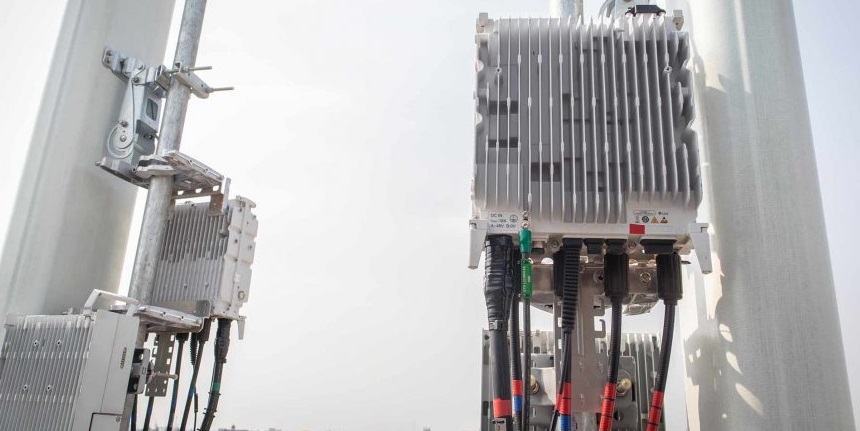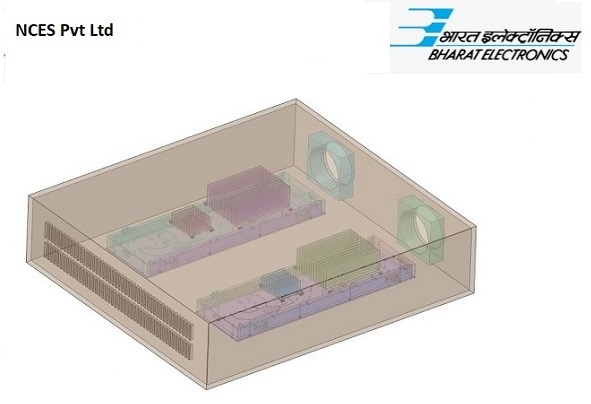AGITATOR - AN OVERVIEW
Agitators are equipment used to homogenize media inside a tank. They work by rotating immersed impellers at a controlled speed. The work exerted by the impeller induces the flow and shear of the media inside the tank, causing a single or multi-component media to homogenize. Agitators are used in industries to enable proper mixing of liquids, promote chemical reactions inside the equipment, keep homogeneous liquid bulk during storage, increase heat transfer during heating or cooling, disperse immiscible liquids, keep the product in a mixed state until used, blend miscible liquids, and dissolve some solids into liquid. Common types of agitators employed for industrial purposes are Paddle Agitators, Anchor type agitators, Propeller type agitators, Blade type agitators, Turbine type agitators, and Helical Agitators. Helical agitators are a type of mixing equipment consisting of ribs or blades arranged in the form of a helix. This design creates axial motion and vigorous fluid motion inside a vessel. It is often used to mix viscous materials. The helical agitator is commonly used for low Reynolds number industrial mixing. The helical design of these agitators generates high shear rates and ensures thorough mixing of materials with different densities and viscosities. Helical agitators are used in polymer industries and other industries that require the use of quite viscous materials.
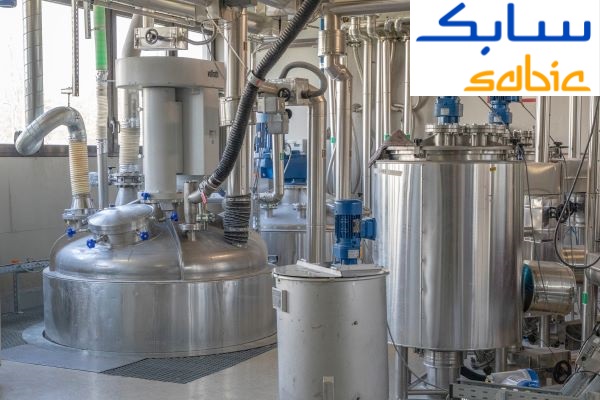
SCOPE OF THE PROJECT
The objective of the project is to perform a 3D transient multiphase computational fluid dynamics (CFD) analysis for a helical agitator measuring approximately 12 meters in height and 3 meters in diameter. The helical coil is powered by a 30 HP motor operating at 24 RPM. The client seeks to understand the mixing process of three distinct types of polymer granules and the duration required to attain homogeneity in the mixture.
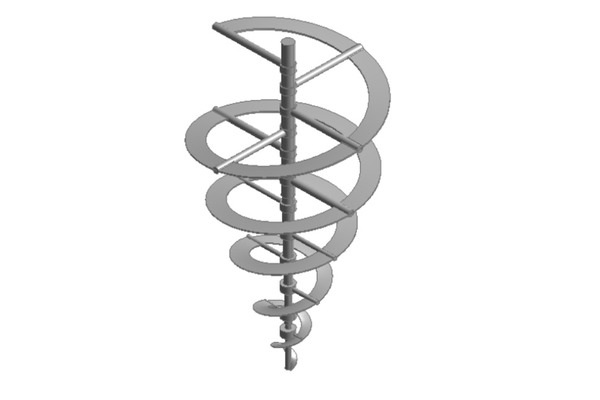
CFD MESH
The computational fluid dynamics (CFD) domain is discretized using polyhedral hex core elements, resulting in an approximate mesh count of 8 million. The mesh is specifically refined in areas with high flow gradients. Quality metrics for the mesh are upheld in accordance with established best practices in CFD analysis.
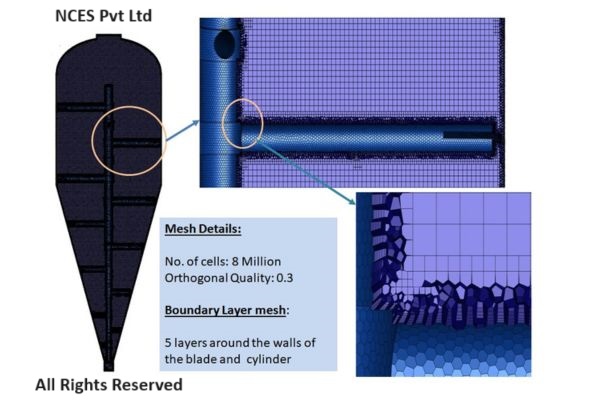
EULERIAN MULTIPHASE FLOW MODEL
The Eulerian computational fluid dynamics (CFD) model is utilized to simulate the transport of granules alongside the primary air phase, incorporating suitable interaction models for each phase. This model operates with a shared pressure field across all constituent phases, while the momentum and continuity equations are addressed independently for each phase. The Eulerian approach is particularly effective for examining the mixing of granules.
Pressure on the Helicoil
The pressure contours on the helicoil have been provided to the client for further finite element analysis studies. All species share a common pressure field in the Eulerian multiphase CFD analysis.
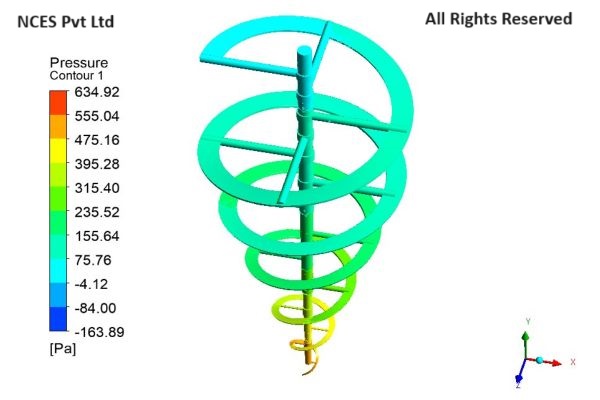
Volume Fraction
Contour plots and the graphical representation of the volume fraction for each species in a multiphase mixing CFD analysis demonstrate the efficiency of the agitation process. A thorough analysis of the volume fraction for each granular species at various heights of the agitator is conducted, leading to a comprehensive conclusion about the effectiveness of the mixing process.
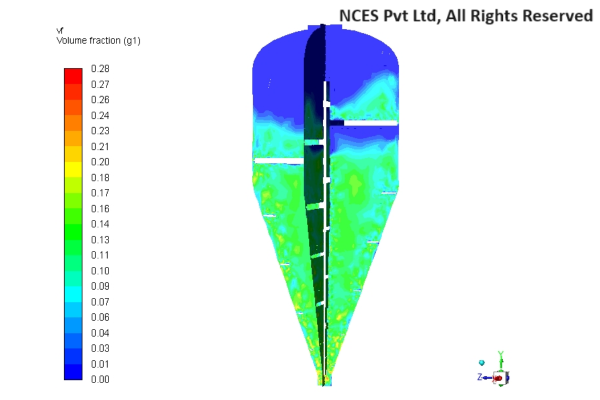
We Got More
Go through All Our Case Studies

Mechanical and Structural design of Disk baffle for Oligomerisation reactor
We executed this project for a SABIC Petrochemical plant located in Al Jubail, Saudi Arabia. The proposed disk baffle is expected to serve the function of separating the condensate in the Oligomerisation reactor. We developed the conceptual model of the disk baffle using our expertise in core mechanical design and optimized the design using Finite Element Analysis (FEA). We provided detailed fabrication drawings to the customer and supported them during Fabrication process. Read More
CFD analysis of Multi Band Remote Radio Unit
The advent of 5G technology has brought about unprecedented advancements in wireless communications, enabling faster speeds, lower latency, and increased capacity. These advancements are associated with higher power consumption and increased heat generation in the 5G Remote Radio units.Increasing data rates and network densification require radio units to process larger volumes of data, leading to higher power consumption and heat generation. Environmental factors such as ambient temperature, humidity, and exposure to direct sunlight also impact the thermal aspects of the radio units. Read More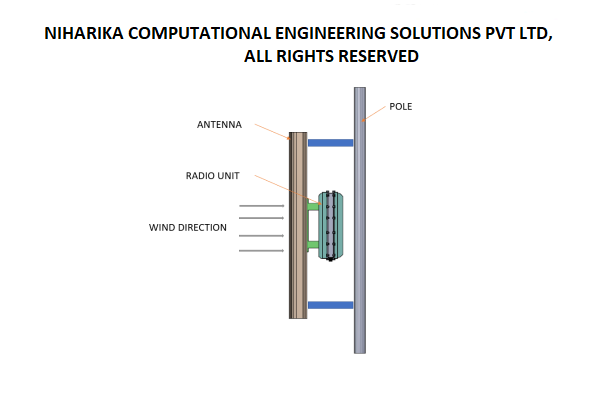
Wind Load analysis for multiband 5G Remote Radio Unit with Antenna using CFD
The seamless operation of base station antennas is of utmost importance for efficient and reliable communication networks. However, these antennas are constantly exposed to various environmental factors that can affect their performance and structural stability. Among these factors, wind load plays a significant role. Read MoreDEVELOPMENT OF COOLING SOLUTION FOR GaN RF POWER AMPLIFIER
The demand for high-power and efficient radio frequency (RF) power amplifiers has been steadily increasing across various industries, including wireless communications, radar systems, and satellite communication. GaN (Gallium Nitride) technology has emerged as a game-changer in RF power amplification due to its exceptional performance characteristics and advantages over traditional technologies. GaN technology offers higher power density, improved efficiency, and wide bandwidth capability, setting it apart from traditional technologies like GaAs (Gallium Arsenide) or SiC (Silicon Carbide). Read More
AERODYNAMICS ANALYSIS OF TELECOM TOWER STRUCTURE
By meticulously considering the principles of aerodynamics in the design of telecom towers, engineers can effectively reduce wind induced vibrations. This not only enhances the overall experience for everyone but also guarantees the towers long term structural integrity and stability. Read More